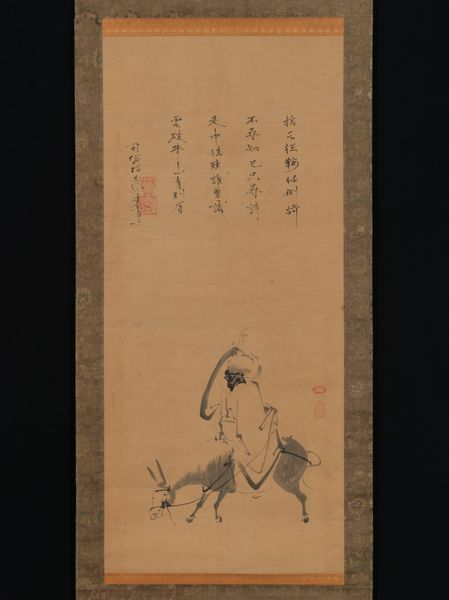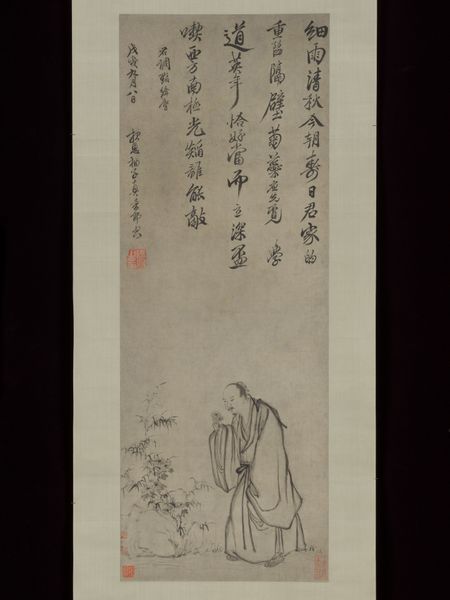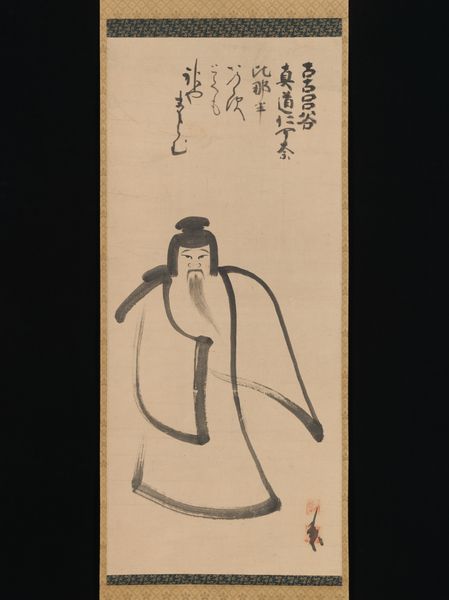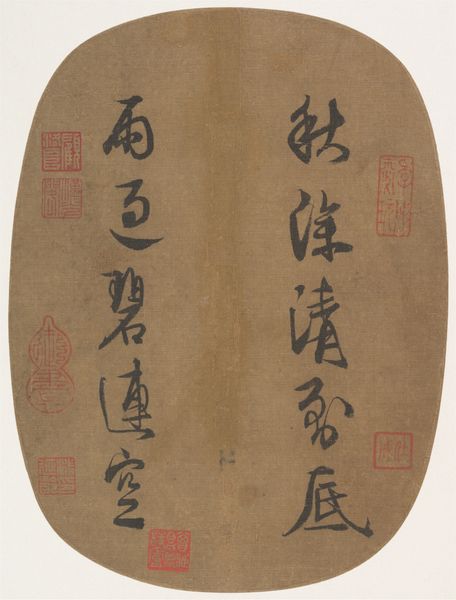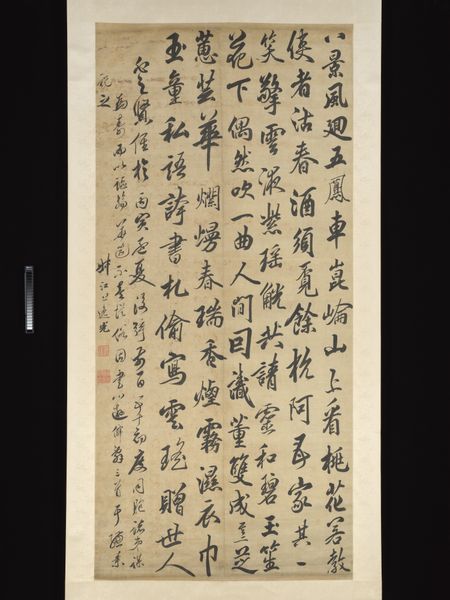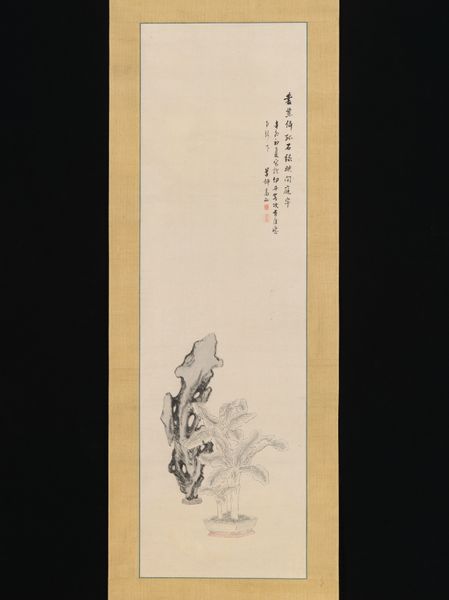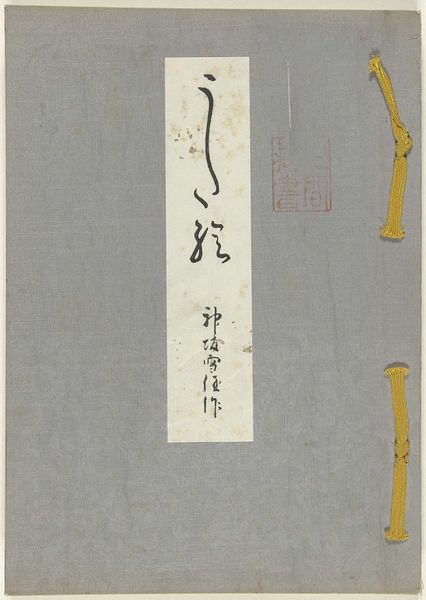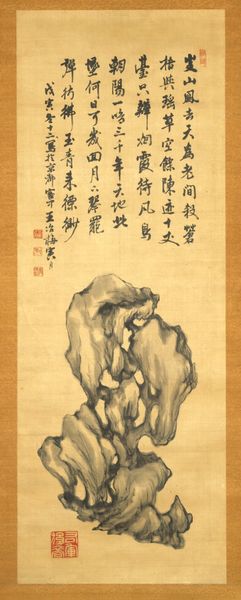
drawing, ink
#
portrait
#
drawing
#
asian-art
#
figuration
#
ink
Dimensions: Image: 35 1/4 × 13 1/8 in. (89.6 × 33.4 cm) Overall with mounting: 70 7/8 × 18 9/16 in. (180 × 47.2 cm) Overall with knobs: 70 7/8 × 20 9/16 in. (180 × 52.3 cm)
Copyright: Public Domain
Editor: Here we have Unkoku Tōgan's ink drawing "Bodhidharma," dating somewhere between 1567 and 1633. The figure, rendered with swift strokes, has an intense gaze. What aspects of this work stand out to you, and how do you interpret it? Curator: The portrayal of Bodhidharma reflects the evolving role of Zen Buddhism within Japanese society at the time. These ink paintings, often produced by Zen monks or artists connected to Zen circles, weren't merely devotional images. How might we consider their role within elite social circles? Editor: Elite social circles? That’s not something I considered initially. Curator: Consider the cultural weight associated with Zen and its practice among the samurai class, for instance. The starkness of the ink drawing, the meditative quality...these weren't just aesthetic choices. They signaled something about the patron’s own cultivation and affiliations. Also, think about how the use of a Chinese subject connects it to an esteemed artistic lineage. Editor: So, the patron is signaling social status through commissioning this artwork? Curator: Exactly. The painting becomes a marker of taste, intellectual alignment, and even political positioning within a complex social landscape. Does seeing it that way alter your initial perception? Editor: Definitely. I was focusing more on the individual and his story, but this sheds light on how art serves multiple social functions simultaneously. I guess, sometimes we don't often think of these more historical points. Curator: Indeed, thinking about reception gives the painting continued vitality.
Comments
No comments
Be the first to comment and join the conversation on the ultimate creative platform.
